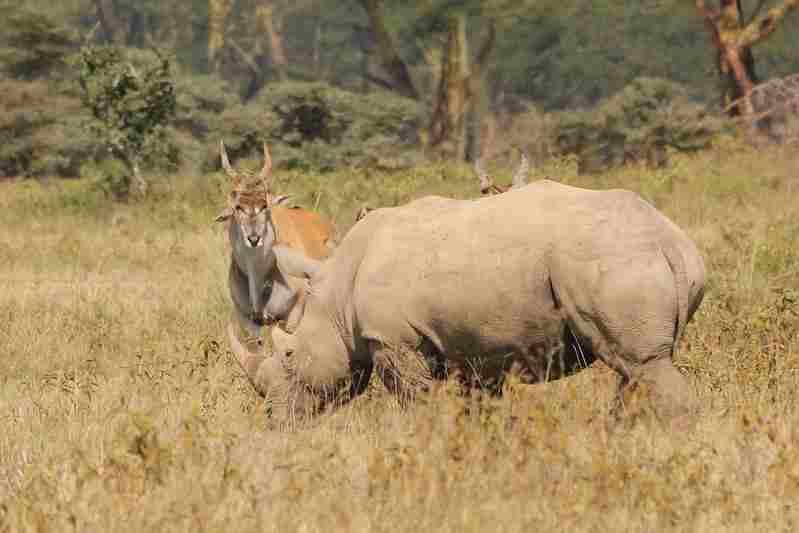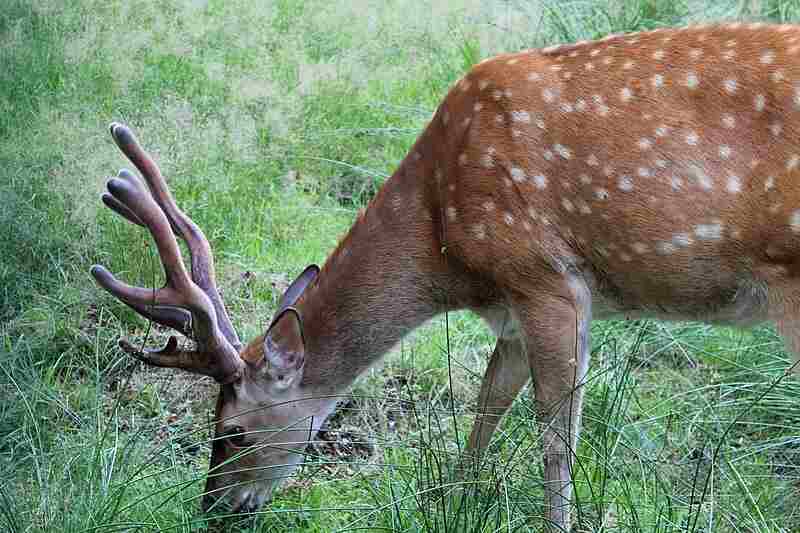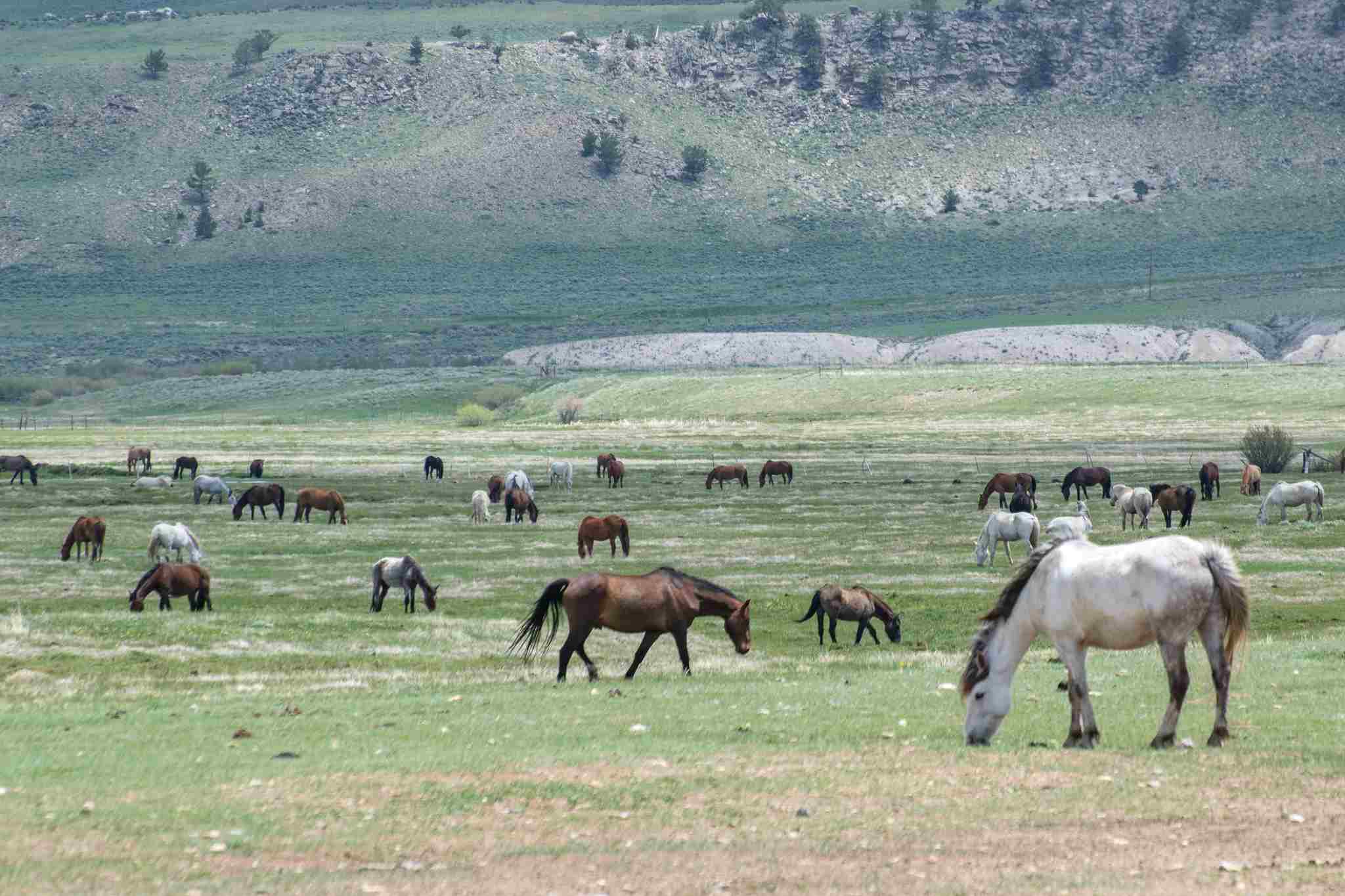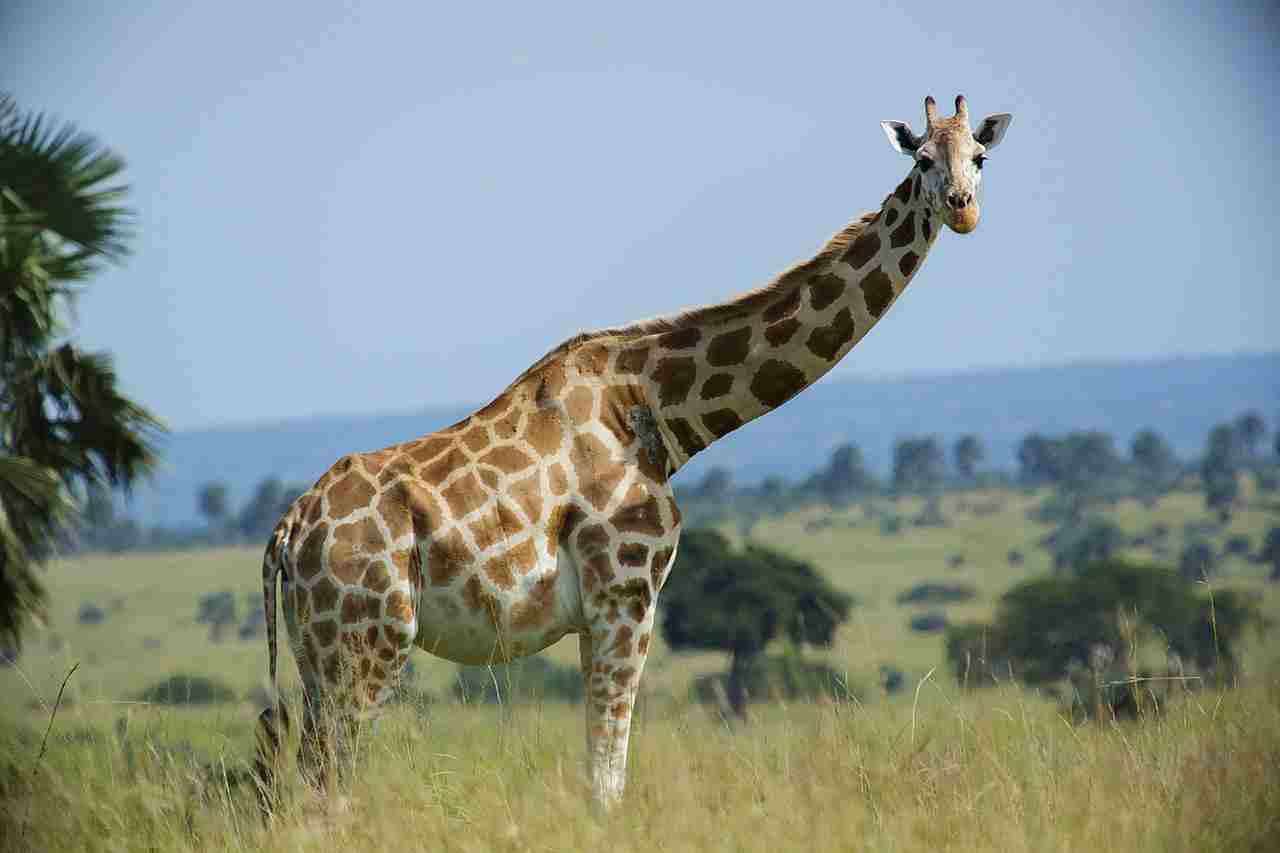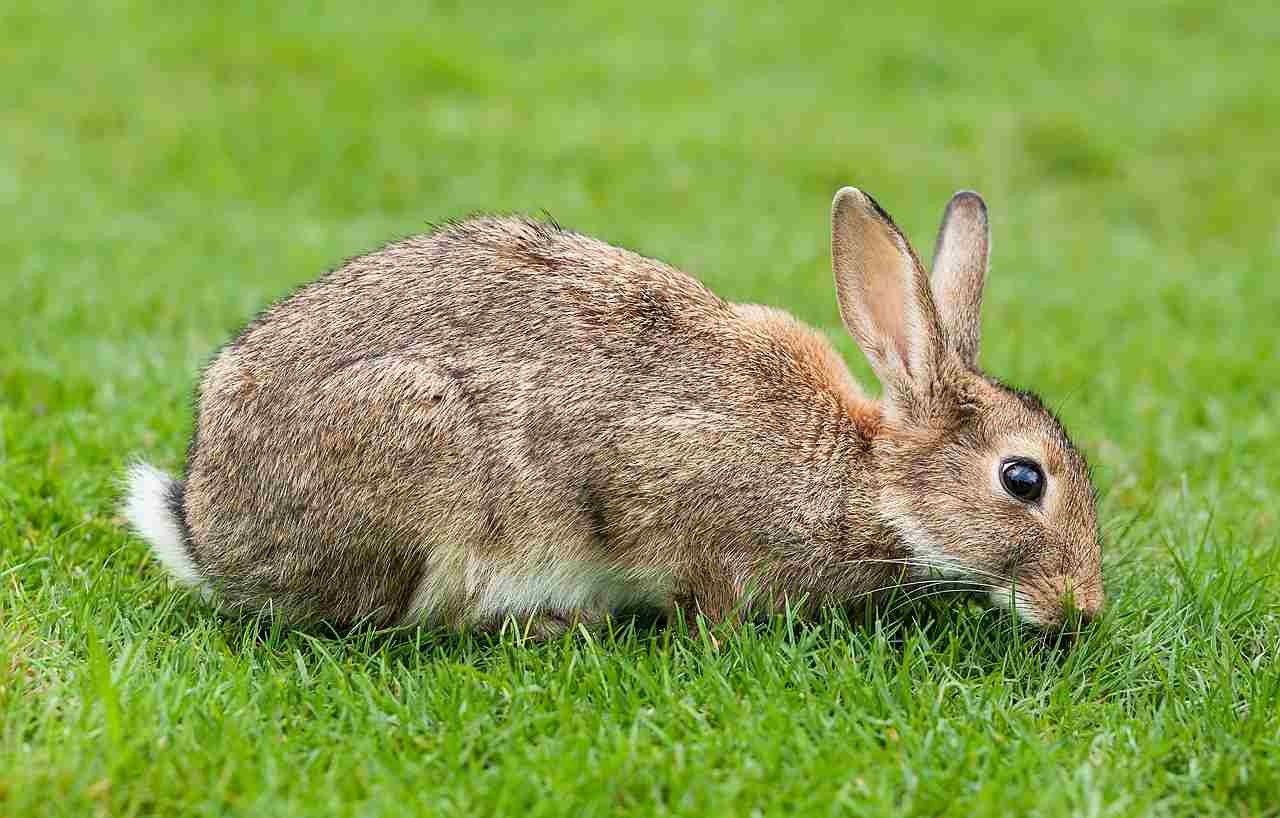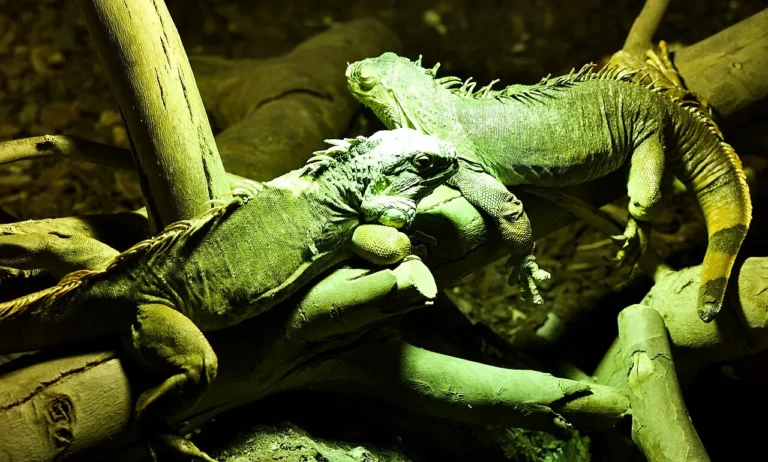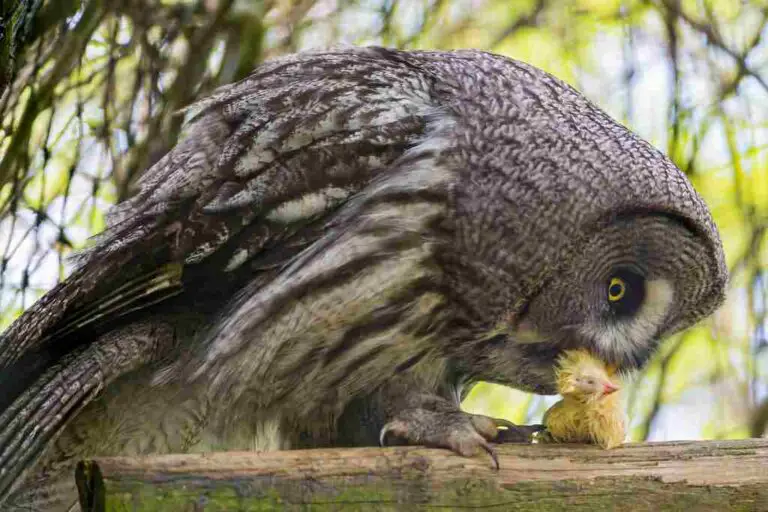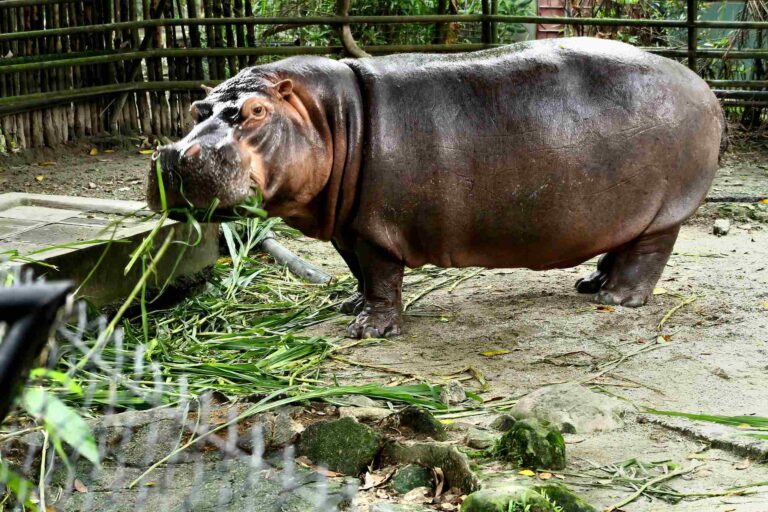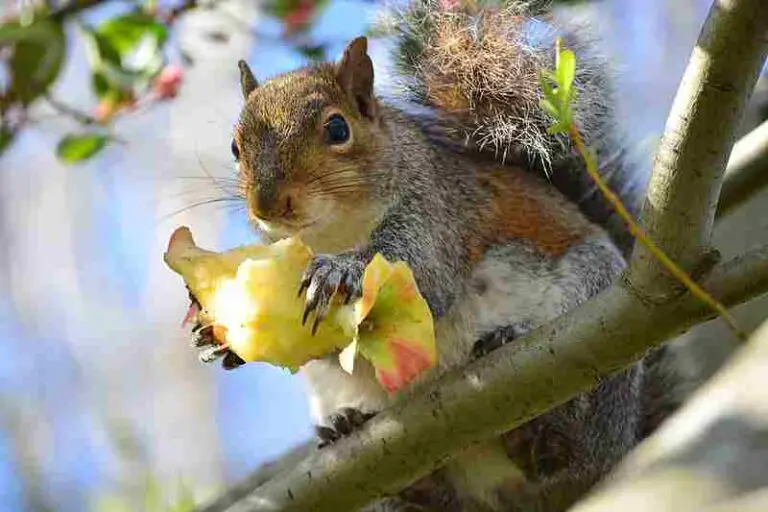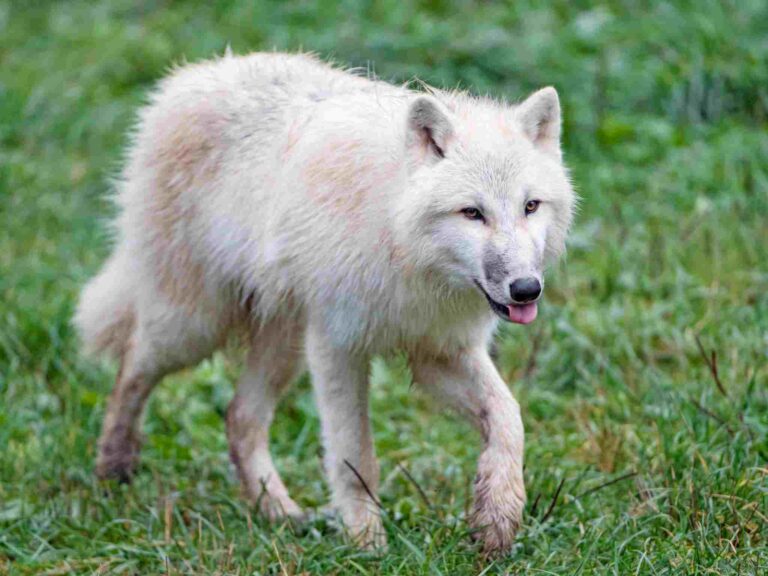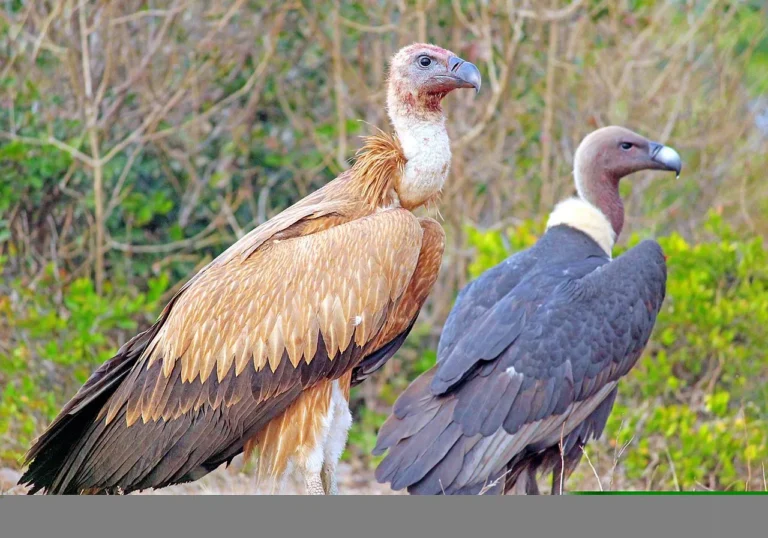Is a Cow a Primary Consumer? Unraveling the Consumer Role of Cows
Yes, cows are primary consumers because they directly feed on plants, which are producers in the food chain. As herbivores, cows rely on consuming vegetation as their main source of energy and nutrients.
They graze on grass, leaves, and other plant materials, utilizing their specialized digestive system to break down cellulose and extract nutrients. This feeding behavior places them in the second trophic level of the food chain, above the producers but below the higher-level consumers.
Why a Cow is a Primary Consumer
1. Direct Feeding On Producers
Cows are considered primary consumers because they directly feed on producers, which are plants. This is a fundamental reason why cows occupy the first trophic level of the food chain. As primary consumers, cows rely on plants as their main source of energy and nutrients. They graze on grass, leaves, and other vegetation, extracting the necessary sustenance to support their growth and survival.
By consuming plants, cows play a crucial role in transferring energy from the sun to the rest of the food chain. They convert the energy stored in plants into their own biomass, making it available for other organisms at higher trophic levels. This makes cows an essential link in the ecosystem, facilitating the flow of energy and nutrients.
Cows’ direct feeding on producers distinguishes them from secondary consumers, which feed on primary consumers. While cows may serve as prey for higher consumers, such as carnivores or omnivores, their primary role as consumers lies in their direct consumption of plants. This makes them an integral part of the primary consumer category in the food chain.

2. Cows Occupy the Second Trophic Level of the Food Chain
Cows occupy the second trophic level of the food chain because they feed directly on plants. This is a fundamental reason why cows are considered primary consumers.
As mentioned earlier, primary consumers rely on producers, which are plants, as their main source of energy and nutrients. Cows graze on grass, leaves, and other vegetation, extracting the necessary sustenance to support their growth and survival. By consuming plants, cows play a crucial role in transferring energy from the sun to the rest of the food chain.
The second trophic level is where primary consumers, like cows, are positioned. They are the first consumers in the food chain, directly consuming the energy-rich plants. This makes cows an essential link in the ecosystem, facilitating the flow of energy and nutrients.
At the second trophic level, cows occupy a unique position. They are distinct from secondary consumers, which feed on primary consumers. While cows may serve as prey for higher consumers, such as carnivores or omnivores, their primary role as consumers lies in their direct consumption of plants.
Cows’ position at the second trophic level highlights their importance in the food chain. They convert the energy stored in plants into their own biomass, making it available for other organisms at higher trophic levels ((like humans who consume beef). This energy transfer is important for the functioning of the entire ecosystem.
3. No Carnivorous or Predatory Behaviors
One of the key reasons why cows are classified as primary consumers is their lack of carnivorous or predatory behaviors. Unlike secondary and tertiary consumers, cows do not hunt or prey on other animals for their food.
Cows are herbivores, which means they have a specialized diet that consists mainly of plants. They have evolved to have a digestive system that is specifically designed to break down and extract nutrients from plant material. Their teeth are adapted for grinding and chewing plant matter, and their digestive tract is optimized for processing cellulose, a complex carbohydrate found in plants.
This herbivorous nature sets cows apart from carnivores and predators, which have sharp teeth and claws for capturing and killing their prey. Cows do not possess these physical adaptations for predation. Instead, they have a gentle and docile nature, preferring to graze peacefully on grass and other vegetation.
By consuming plants, cows obtain the energy and nutrients they need to survive and grow. They play a crucial role in the food chain by converting the energy stored in plants into their own biomass. This biomass is then available for other organisms at higher trophic levels, such as humans who consume beef.
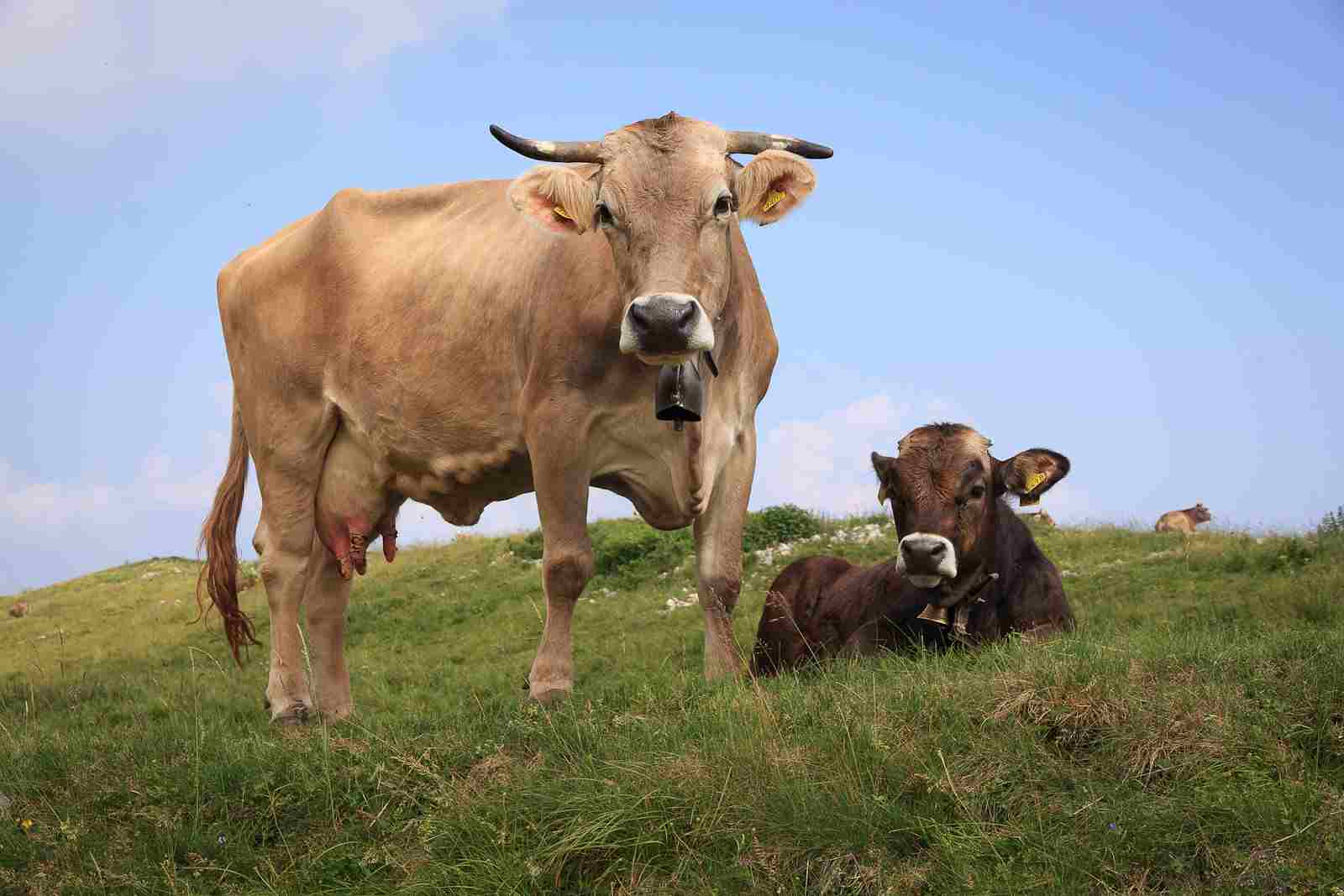
4. Lack of Physiological Adaptations for Predation
Another reason why cows are classified as primary consumers is their lack of physiological adaptations for predation. Unlike carnivores and predators, cows do not possess the physical characteristics necessary for hunting or capturing prey.
Firstly, cows do not have sharp teeth or claws that are typically associated with carnivorous animals. Their teeth are flat and broad, which are better suited for grinding and chewing plant material rather than tearing flesh. This dental structure is a clear indication that cows are not designed to consume meat.
Secondly, cows lack the digestive adaptations required for a carnivorous diet. Carnivores have shorter digestive tracts, allowing them to quickly process and eliminate the waste from consuming animal protein. In contrast, cows have long digestive tracts that are optimized for breaking down and extracting nutrients from plant matter. This physiological difference further supports the fact that cows are herbivores.
Therefore, the absence of teeth, claws, and digestive adaptations for a carnivorous diet clearly demonstrates that cows are not equipped to be predators. Instead, their physical characteristics and digestive system are perfectly suited for consuming and deriving nutrients from plants. This makes them primary consumers in the food chain, as they only feed on producers and occupy the second trophic level.
5. Cows May Serve as Prey for Higher Consumers
Cows may serve as prey for higher consumers, including humans, wild dogs, wolves, leopards, tigers, and lions. This further supports the perspective that cows are indeed primary consumers in the food chain.
As herbivores, cows primarily feed on producers, such as grasses and other plant materials. They obtain their energy and nutrients from these sources, which places them in the second trophic level of the food chain. However, their position as prey for higher consumers is an important factor to consider when discussing their role as primary consumers.
Humans, for instance, consume beef and dairy products derived from cows. This demonstrates that cows can be consumed by organisms at a higher trophic level. Similarly, wild dogs, wolves, leopards, tigers, and lions are known to prey on cows in their natural habitats. These predators rely on cows as a source of food to sustain themselves and their populations.
The fact that cows can be targeted by higher consumers highlights their vulnerability and reinforces their classification as primary consumers. It also emphasizes their role as a link in the food chain, where they serve as a source of energy and nutrients for organisms at higher trophic levels.
Is a Cow a Consumer or Producer?
A cow is classified as a consumer rather than a producer because it does not produce or manufacture its own food. Instead, cows rely on consuming other organisms for their energy and nutrients. As herbivores, cows primarily feed on producers such as grasses and other plant materials. They obtain their sustenance by grazing on these sources, which places them in the second trophic level of the food chain.
Cows lack the ability to synthesize their own food through photosynthesis or any other means. They do not possess the typical physiological features of producers, such as chloroplasts or specialized structures for photosynthesis. Instead, cows have adapted to efficiently digest and extract nutrients from plant matter.
By consuming producers, cows play a vital role in the transfer of energy and nutrients through the food chain. They serve as a link between primary producers and higher consumers. While cows themselves may be consumed by organisms at a higher trophic level, their ecological role remains that of a consumer. They rely on the energy and nutrients obtained from plants to sustain themselves and contribute to the overall functioning of the ecosystem.
Reasons Why a Cow is Not a Producer
1. Cows Do Not Manufacture Their Own Food
Cows, as primary consumers, do not manufacture their own food. Unlike plants and other producers, cows lack the ability to carry out photosynthesis. Photosynthesis is the process by which plants convert sunlight, water, and carbon dioxide into glucose, their main source of energy. Cows, being animals, rely on consuming organic matter, such as plants, to obtain the energy they need for survival.
Photosynthesis is a complex biochemical process that requires specialized structures and pigments, such as chlorophyll, which are found in plant cells. These structures and pigments enable plants to capture sunlight and convert it into chemical energy. Cows, on the other hand, do not possess these structures or pigments, making them unable to produce their own food through photosynthesis.
Instead, cows have evolved to be herbivores, meaning they primarily consume plant material. They have specialized digestive systems that allow them to break down and extract nutrients from plant matter. Cows have a multi-chambered stomach, which includes the rumen, reticulum, omasum, and abomasum. These chambers work together to ferment and digest the plant material, extracting nutrients such as carbohydrates, proteins, and fats.
Cows rely on grazing or consuming plant material, such as grasses, leaves, and stems, to meet their nutritional needs. They spend a significant amount of time foraging for food and have adapted to efficiently extract nutrients from plant matter.
2. Typical Physiological Features of Producers are Lacking in Cows
When it comes to the physiological features of producers, such as plants, cows are lacking in several key aspects. Unlike plants, cows do not possess structures like roots, stems, leaves, or flagella. These features are essential for plants to carry out photosynthesis and produce their own food.
Roots play a crucial role in anchoring plants to the ground and absorbing water and nutrients from the soil. They also provide support and stability to the plant. However, cows do not have roots as they are mobile animals that graze on vegetation. Instead, cows have hooves that allow them to move around and find food.
Stems are another important feature of plants that cows do not possess. Stems provide support to the plant and transport water, nutrients, and sugars between the roots and leaves. They also help in the growth and development of the plant. Cows, on the other hand, have a skeletal system that provides support and structure to their bodies.
Leaves are the primary site of photosynthesis in plants. They contain chlorophyll, which captures sunlight and converts it into energy. Cows, however, do not have leaves or chlorophyll. They rely on consuming plant material that contains chlorophyll to obtain energy. The nutrients derived from the plant material are then used by cows for various physiological processes.
Flagella are whip-like structures found in some organisms, such as algae, that help in movement. Some phytoplankton do have flagella, but cows do not. Cows have instead evolved to possess limbs that allow them to move and graze on vegetation.
Is a Cow a Consumer?
Yes, a cow is indeed a consumer. As a primary consumer, cows rely on other organisms to obtain the nutrients and energy they need to survive. In the context of the food chain, cows occupy the second trophic level, just above the producers.
Cows are herbivores, meaning they primarily feed on plants. They graze on grasses, leaves, and other vegetation, using their specialized teeth and digestive system to break down plant material and extract the necessary nutrients. By consuming plants, cows play a vital role in transferring energy from the producers to higher-level consumers.
Cows lack the physiological adaptations necessary for predation or carnivorous behaviors. Unlike predators, they do not possess sharp teeth or claws for capturing and killing prey. Instead, their teeth are designed for grinding and chewing plant matter. This further supports the notion that cows are consumers rather than predators.
When comparing cows to producers, such as plants, it becomes evident that cows do not possess the typical physiological features of producers. Unlike plants, cows do not manufacture their own food through photosynthesis. They lack structures like roots, stems, leaves, and flagella, which are essential for plants to carry out photosynthesis and produce their own food.
Roots, stems, and leaves are crucial for plants to anchor themselves, transport water and nutrients, and carry out photosynthesis. Cows, on the other hand, have hooves for mobility and a skeletal system for support. They rely on consuming plant material that contains chlorophyll, the pigment responsible for capturing sunlight and converting it into energy.
FAQs
1. What are 10 Examples of Primary Consumers?
Below are 10 examples of primary consumers;
1. Rabbits
These small mammals primarily feed on grass and other plant materials.
2. Deer
Deer graze on leaves, twigs, and grass, making them primary consumers in many ecosystems.
3. Cows
Cows are herbivores that consume grass and other vegetation.
4. Sheep
Like cows, sheep are herbivores that feed on grass and other plant matter.
5. Elephants
These gentle giants consume large quantities of vegetation, including leaves, bark, and fruits.
6. Giraffes
Giraffes use their long necks to reach leaves high up in trees, making them primary consumers of foliage.
7. Koalas
Koalas primarily feed on eucalyptus leaves, making them specialized primary consumers.
8. Caterpillars
Caterpillars are the larval stage of butterflies and moths, and they feed on plant leaves.
9. Grasshoppers
These insects consume grass and other plant materials, making them primary consumers in many ecosystems.
10. Antelopes
Antelopes graze on grasses and other vegetation, playing a crucial role as primary consumers in grassland ecosystems.
These examples demonstrate the diverse range of primary consumers in various ecosystems.
2. What is a Secondary Consumer to a Cow?
A secondary consumer to a cow is an animal that feeds on the cow (or its byproducts like carcasses). While cows primarily consume plants and are considered primary consumers, they can also serve as a food source for other animals. In the wild, predators such as wild dogs, wolves, and large felines may prey on cows, making them secondary consumers in relation to the cow. These animals rely on the energy and nutrients obtained from consuming the cow to sustain themselves.
In comparison to each other, however, wild dogs are secondary consumers, while large felines and wolves are tertiary consumers.
3. What Type of Consumer is a Cow?
A cow is classified as a primary consumer. As a primary consumer, cows primarily eat plants as their main source of food. They consume grasses, hay, and other vegetation, deriving their energy and nutrients from these plant materials. Cows are herbivores, meaning they do not consume meat or other animal products.
Cows play a crucial role in the food chain as primary consumers. They occupy the second trophic level, which is the level above the producers. Producers, such as plants, are the foundation of the food chain as they convert sunlight into energy through photosynthesis. Cows directly feed on these producers, utilizing the energy stored in plants to sustain themselves.
Unlike secondary consumers, which feed on other animals, cows do not exhibit carnivorous or predatory behaviors. They lack the physiological adaptations necessary for predation, such as sharp teeth and claws. Instead, their digestive system is specialized for breaking down plant matter.
4. Is a Cow a Primary Consumer or Secondary?
A cow is classified as a primary consumer, not a secondary consumer. As a primary consumer, a cow primarily eats plants and vegetation as its main source of food. Unlike secondary consumers, which feed on other animals, cows do not exhibit carnivorous behaviors. They lack the physiological adaptations necessary for predation, such as sharp teeth and claws. Instead, cows have a specialized digestive system that is designed for breaking down plant matter.
Cows occupy the second trophic level in the food chain, which is above the producers. Producers, such as plants, are the foundation of the food chain as they convert sunlight into energy through photosynthesis. Cows directly feed on these producers, utilizing the energy stored in plants to sustain themselves.
5. Is a Cow a Primary Consumer in The Food Chain
A cow is indeed a primary consumer in the food chain. It occupies the second trophic level, which is above the producers that it consumes. As a primary consumer, a cow primarily feeds on plants and vegetation as its main source of food.
This means that it directly consumes the energy stored in plants to sustain itself. Unlike secondary consumers, which feed on other animals, cows do not exhibit carnivorous behaviors. They lack the physiological adaptations necessary for predation, such as sharp teeth and claws. Instead, cows have a specialized digestive system that is designed for breaking down plant matter.
So, in the food chain, a cow plays the role of a primary consumer by consuming producers like plants.
6. Is a Cow a Secondary Consumer?
A cow is not a secondary consumer. Unlike secondary consumers, which feed on other animals, cows are herbivores and primarily consume plants and vegetation. They do not exhibit predatory or carnivorous behaviors.
Cows lack the physiological adaptations necessary for predation, such as sharp teeth and claws. Instead, they have a specialized digestive system that is designed for breaking down plant matter. So. a cow iss a primary consumer or herbivore, not as a secondary consumer.
7. What is The Trophic Level of a Cow?
The trophic level of a cow is level 2, making it a primary consumer or herbivore. As a primary consumer, cows primarily feed on plants and vegetation.
They occupy the second position in the food chain, consuming producers such as grass and other plant matter. Cows do not exhibit carnivorous or predatory behaviors, and they lack the physiological adaptations necessary for predation. Instead, their specialized digestive system is designed to break down plant material.
8. Is a Cow a Consumer or Producer?
A cow is a consumer rather than a producer because it does not manufacture its own food. Unlike plants, which are producers and can convert sunlight into energy through photosynthesis, cows rely on consuming plant material for their energy needs.
They are herbivores and feed on grass and other vegetation. Cows lack the typical physiological features of producers, such as chloroplasts for photosynthesis. Instead, their digestive system is specialized for breaking down plant material. Therefore, a cow falls into the category of consumer in the food chain.
Conclusion
* A cow is classified as a consumer rather than a producer due to its reliance on consuming plant material for energy. Unlike plants, cows do not have the ability to manufacture their own food through photosynthesis. They lack the physiological features of producers, such as chloroplasts, and instead have a specialized digestive system for breaking down plant material. This places cows in the category of primary consumers in the food chain.
* It is clear that cows occupy the second trophic level of the food chain and engage in direct feeding on producers. They do not exhibit carnivorous or predatory behaviors and lack physiological adaptations for predation. While cows may serve as prey for higher consumers, they themselves are primary consumers.
* A cow is not a producer as it does not manufacture its own food. Cows rely on consuming plant material for their energy needs and are herbivores. They lack the typical physiological features of producers, such as chloroplasts for photosynthesis. Therefore, a cow falls into the category of consumer in the food chain.
